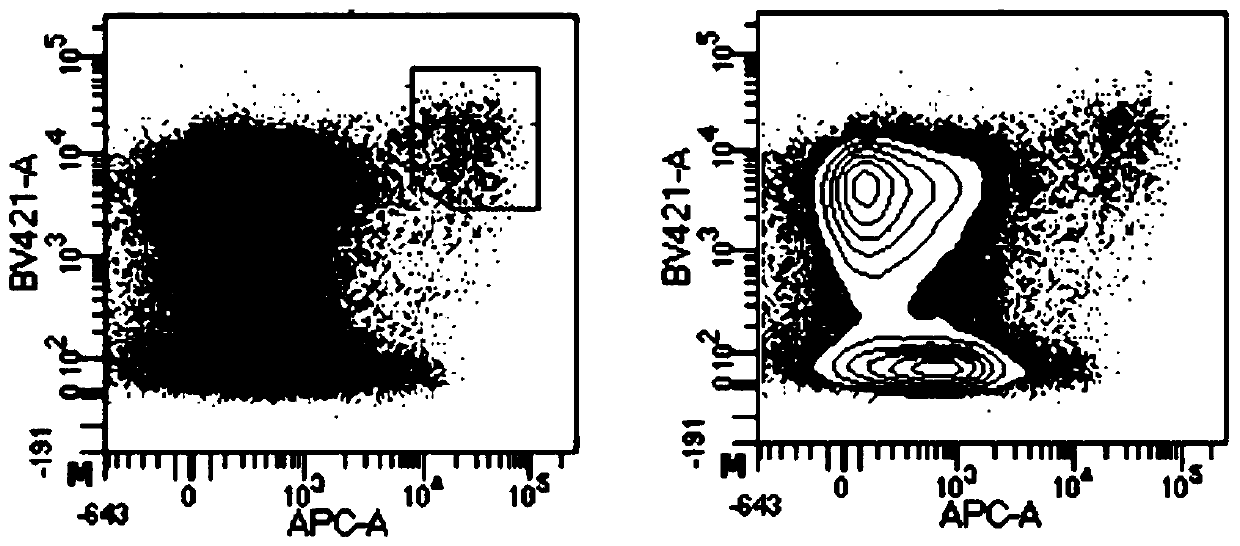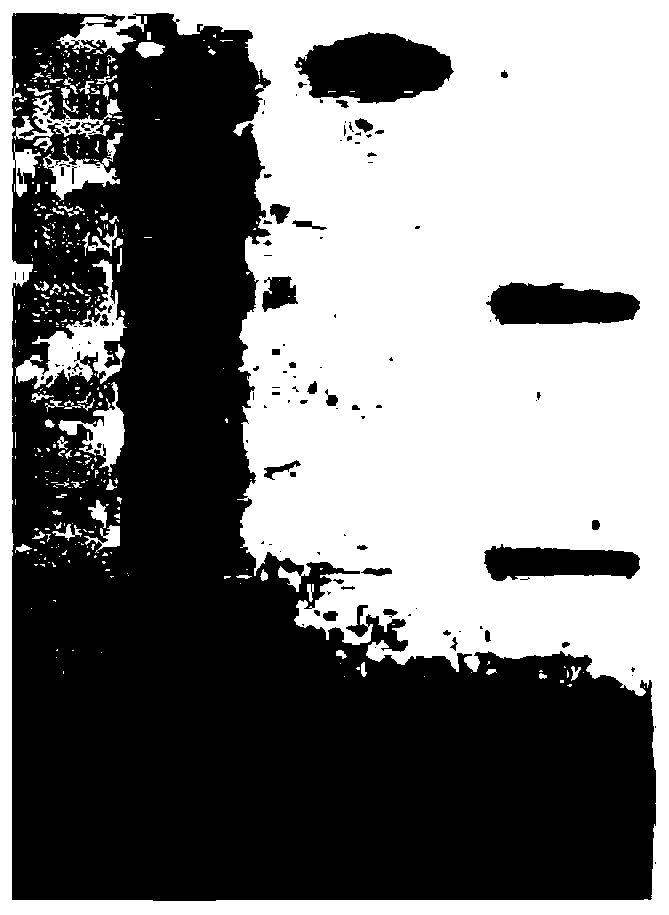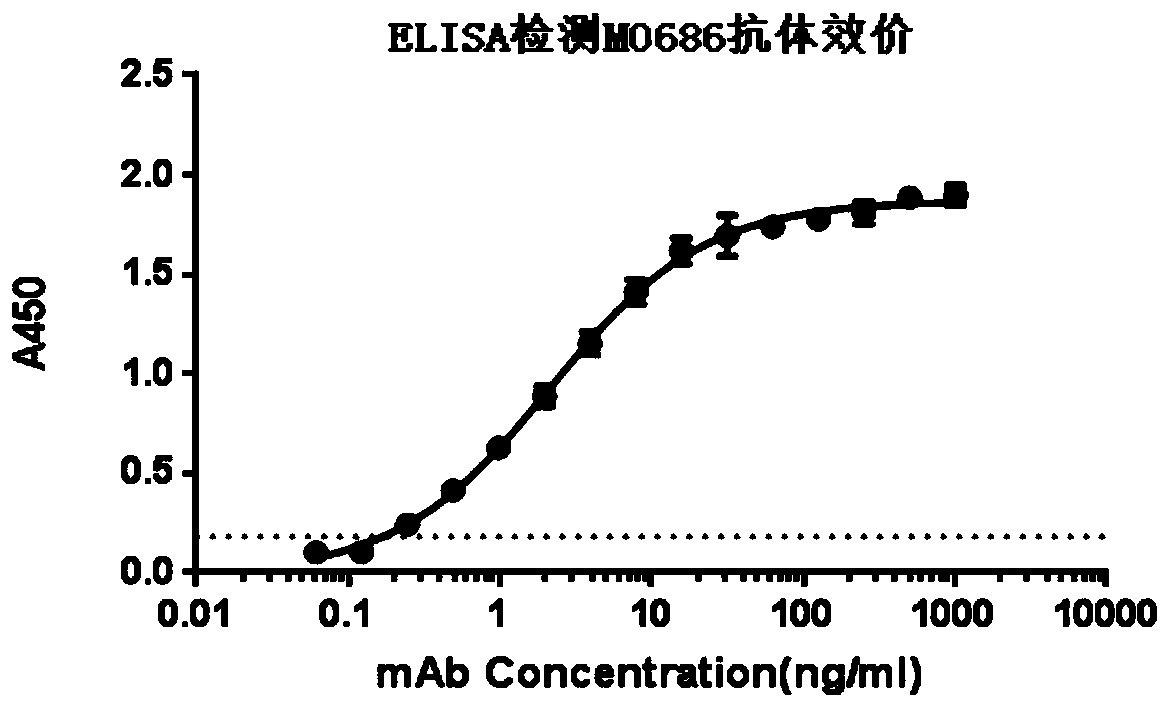Antibody resistant to staphylococcus aureus and manganese ion binding protein C and application of antibody
A staphylococcus and protein-binding technology, which is applied in the fields of medicine and immunology, can solve the problems of aggravated and prominent bacterial drug resistance
- Summary
- Abstract
- Description
- Claims
- Application Information
AI Technical Summary
Problems solved by technology
Method used
Image
Examples
Embodiment 1
[0042] Embodiment 1, expression and purification of Staphylococcus aureus manganese ion-binding protein C (MntC)
[0043] The MntC gene was amplified by PCR from genomic DNA from a S. aureus strain (ATCC accession number BAA-1556). After DNA sequencing proved it, it was expressed in Escherichia coli, cultured overnight at 37°C in LB medium containing ampicillin, and the cells were harvested by centrifugation. The MntC protein was purified by Ni-NTA, and the amino acid sequence of the MntC protein is shown in SEQ ID NO.1.
Embodiment 2
[0044] Embodiment 2, the separation of peripheral blood mononuclear cells (PBMC)
[0045] Recruit healthy volunteers and volunteers who recovered from severe infection of Staphylococcus aureus, collect venous blood samples in anticoagulant tubes containing heparin, and use density centrifugation to separate PBMC cells. Centrifuge at 400×g for 15 minutes; absorb the upper transparent plasma layer and store it at -80°C; after absorbing the supernatant, mix well with the same amount of RPMI1640 (Gibco), and slowly add the same amount of lymphocytes along the inclined tube wall Centrifuge the upper layer of the separation solution at 2000rpm for 20min, absorb the mononuclear cells in the cloud layer into a sterile centrifuge tube, add more than 5 times the volume of RPMI1640, centrifuge at 1000rpm for 5min, wash the cells twice, and resuspend the cells with an appropriate amount of RPMI1640 at 1×10 7 Each tube was frozen and stored in liquid nitrogen for later use.
Embodiment 3
[0046] Example 3, Sorting single plasma cells by flow cytometry
[0047] Using MntC protective antigen protein (HPLC purity > 95%) as the antigen, ELISA was performed on the serum to determine the antibody titer of the sample, and the sample with high antibody titer was selected, and single plasma cells were sorted by flow cytometry, and CD3 / CD14 / CD16 / CD235a-CD19+CD20+ / -CD38hiCD27hi set up gate sorting to separate plasma cell populations at different time points, the results are as follows figure 1 shown. Through serological experiments and B lymphocyte phenotype analysis, we can ensure that we can obtain a large number of single plasma cells from >3% of the plasma cell population, and isolate the gene sequence of the fully human monoclonal antibody against MntC, and reconstruct The nucleotide sequence of the chain is shown in SEQ ID NO.16, and the nucleotide sequence of the light chain is shown in SEQ ID NO.17. A large number of sorted cells are in good condition.
PUM
| Property | Measurement | Unit |
|---|---|---|
| Relative molecular weight | aaaaa | aaaaa |
Abstract
Description
Claims
Application Information
 Login to View More
Login to View More - R&D
- Intellectual Property
- Life Sciences
- Materials
- Tech Scout
- Unparalleled Data Quality
- Higher Quality Content
- 60% Fewer Hallucinations
Browse by: Latest US Patents, China's latest patents, Technical Efficacy Thesaurus, Application Domain, Technology Topic, Popular Technical Reports.
© 2025 PatSnap. All rights reserved.Legal|Privacy policy|Modern Slavery Act Transparency Statement|Sitemap|About US| Contact US: help@patsnap.com



